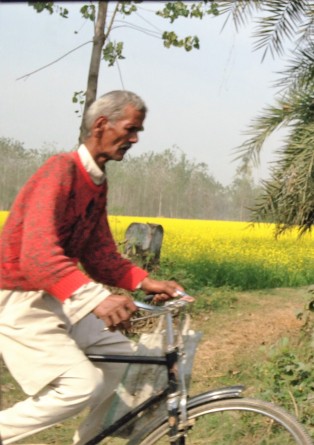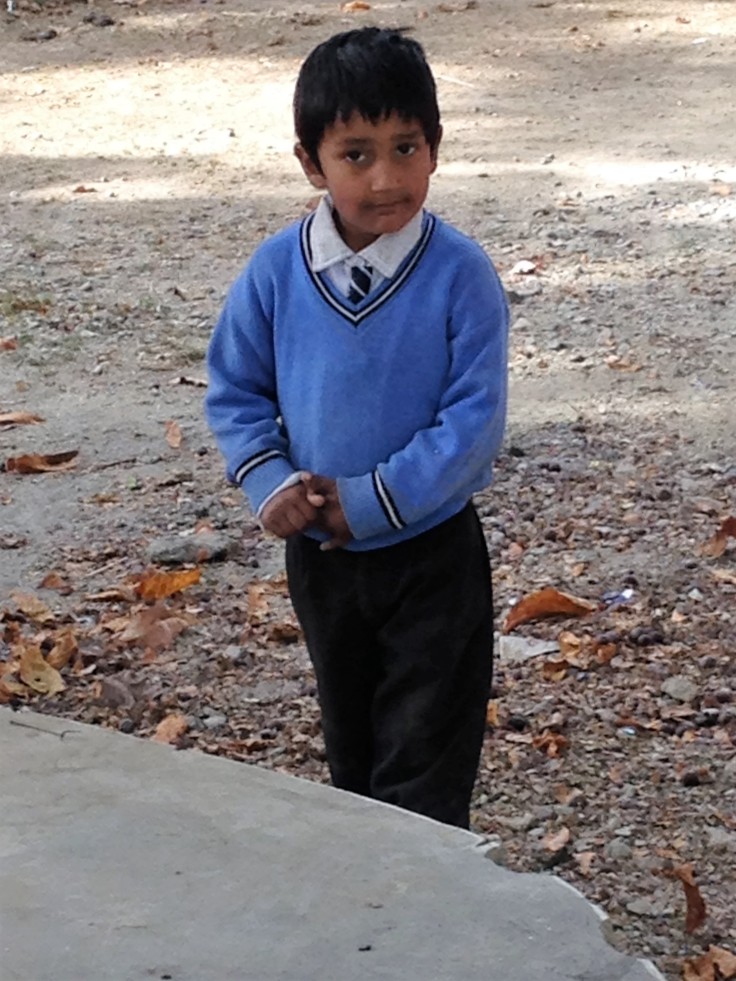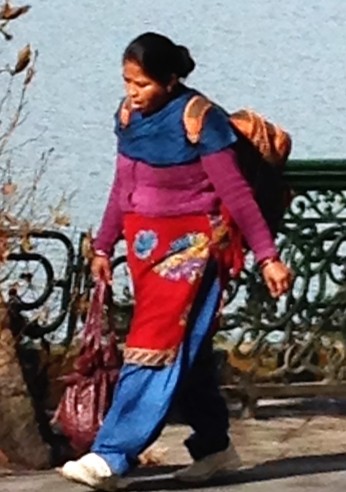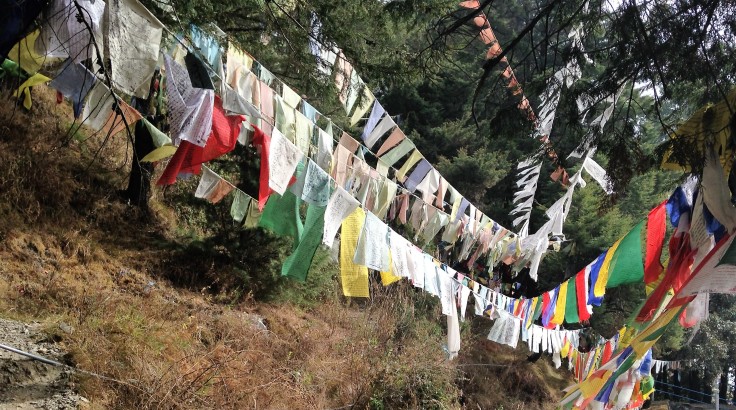The Lotus Flower
I sat cupped in the lotus temple in Delhi and sank into India. I could have sat there for days, listening to the silence, respecting the peace that it held, and feeling the people around me do the same. It was the first time a flower held me and I did not want it to let me go. As with so many things in my life, I could not get enough of it, I wanted it to saturate me, but there was not enough time to let it.
People on the side of the road.
The way that people get around in India is creative. The men sit astride their motorbikes and the women in their saris sit side-saddle. Sometimes they squish a few children between them, or a bundle of food. Workers carry jugs of milk, stacks of wood, boxes, container behind them, which teeter precariously behind them. Then there are the donkey or horse-drawn wagons full of hay and families of ten to twelve.
The Ganges
On our way to Nianital, we got to see the Ganges. It was a holiday specifically for worshipping. This meant that everyone was headed to cleanse in the river. I felt honored to be caught up in the excitement of this celebration. I never imagined that I would visit India. In fifth grade, I never thought that the stories I read in the little brown text book would materialize in front of my eyes. The people we saw on our way to the Ganges were mesmerizing. Everyone seemed to have a special way of peering at us through the windows of our taxi with curiosity, eyes sparkling and gleaming smiles. We passed a wagon-load of an extended family, we passed fathers lifting their little boys off of trucks full of people to pee in a giant arch across the road before catching up to the truck in the slow moving traffic. Water buffalo wove their way aimlessly through the maze of cars, trucks, taxis, carts and bicycles. Imagine a super highway full of people sitting open to the world, to each other, to nature and the animals. Occasionally, a monkey would poke its head out of a tree. When we met the Ganges, it was everything that I wanted it to be. People bathing, slipping, sliding on its murky banks. And it was vast, and calm, as it carried its significance and grace through India.
Nianital




We started our ascent into the hill town of Nianital just as the sun started to set. The mountains grew as we ascended into the red clouds. Nianital is a resort town, about 2,000 meters (6,500 feet) high. Our driver dropped us off in the parking lot while Nitin and Bonzai settled things with the hotel. Starving Dolores and I gobbled god-candy before entering the Sikh temple tucked in at the end of the lake. We retired in our hotel after Nitin treated us to a few games of Snakes and Ladders.
Masala Tea
I am a coffee drinker and India doesn’t do coffee, unless you are like Dolores and you like more milk than coffee. So I discovered masala tea. Masala tastes like India – black tea with ginger and milk, no sugar.
Double-dipping the Himalayas.
Like the Ganges, I never expected to see the Himalayas, so when I did, I practically fell prostrate. The Himalayas had always seemed too magnificent to be real, and they were. I got to see them again on our horseback ride later that day.
Marriage.
The main reason I went to India was the wedding as if I need an excuse to go there. Hopefully, without stirring up any disrespect, I can broach the concept of arranged marriages in India from my rather warped western perspective. It is not that it bothers me that parents match their sons or daughters, or that they may go on a dating site to do so. It is the desperation that seems to go with the importance of being married. As a non-believer in marriage, it is hard for me to wrap my head around this in any culture including my own. People in their twenties and thirties are still marrying in India by arrangement. When we asked them why, it was mostly because the parents wanted it that way. Parents are highly revered there from what I can see. Also, if you are an elder in your family and you do not marry, then you hold up the line for the younger siblings. This is by no means a put down; it is simply me trying to understand why people in the 21st century still follow this tradition.
I wonder if India grew up so fast that its history could not keep up with it.
The Wedding
We arrived at the wedding late due to traffic and getting lost. We checked in with the bride who was so stunning that she could not move. She wore red and glistened with gold, sequins, and joy. We left her standing in a small room downstairs, and drifted upstairs to an open-roofed room. We were greeted with milkshakes (now that is my kind of party). Then we ate hors d’oeuvres while trying to save room for the banquet waiting for us in the next room. We feasted on luscious food. Four hours later, the groom appeared with all of his male friends. The ceremony was frolicsome, traditional and sacred. The ceremonial part was left to the groom and his compadres. The eldest brother stuck to the groom as it was his role to give away his sister and entrust her to the groom. Once the groom finished his antics and ceremony, the bride and her women came in delicately, and the traditional teasing and ceremony continued. The rest of the wedding was a photo shoot, so we left.
India takes a long time to absorb. What did I take from it? Beauty and peace and magnificence. Magnificence because that word evokes power and magnitude. Indians wear their culture; they share it with those who are fortunate enough to visit. India is the lotus that held me in its palm.


































August 20, 2016 at 12:58 pm
Pictures and descriptions are amazing. Here is hoping fair Athena will guide you along, making way for your safe travels.
LikeLike
August 21, 2016 at 3:46 am
Artemis too!
LikeLike
December 17, 2015 at 11:38 pm
Hi Lisa…just getting around to reading these! Appreciate your falling down when seeing the Himalayas. You wont ever forget any of this. Lov
e you lots…Allie .
LikeLike